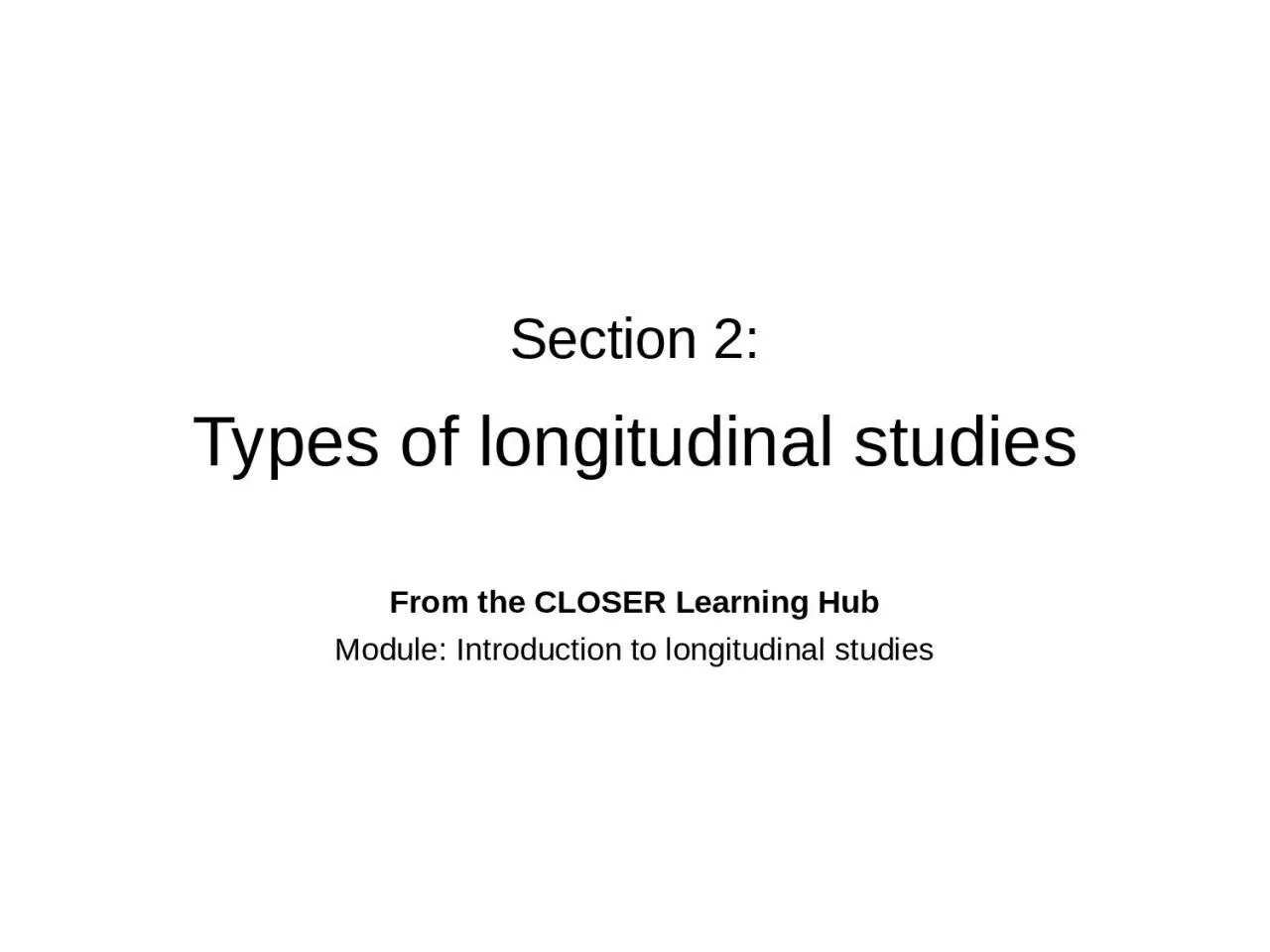

From the CLOSER Learning Hub Module Introduction to longitudinal studies Panel studies Follow the same individuals over time and vary considerably in scope and scale Household panel studies collect information from the whole household rather than individuals ID: 929812
Download Presentation The PPT/PDF document "Section 2: Types of longitudinal stud..." is the property of its rightful owner. Permission is granted to download and print the materials on this web site for personal, non-commercial use only, and to display it on your personal computer provided you do not modify the materials and that you retain all copyright notices contained in the materials. By downloading content from our website, you accept the terms of this agreement.
Slide1
Section 2: Types of longitudinal studies
From the CLOSER Learning Hub
Module: Introduction to longitudinal studies
Slide2Panel studiesFollow the same individuals over time and vary considerably in scope and scale
Household panel studies collect information from the whole household, rather than individuals
Household panels incorporate new participants as households break-up and reform
Slide3Cohort studiesFollow groups of individuals with specific temporal boundariesBirth
cohort studies which follow groups of people born within the same time
period
Cohort
studies represent a particular cohort of people, rather than the population as a
whole
Slide4Record linkage studiesConducted without personal interviews by linking administrative records (for example, benefit receipts or census records) for the same individuals over
time
Advantages: potentially large sample sizes, less risk of participant drop out or reporting error
Disadvantages:
limited by the nature of the records they are based on
Example: UK Census Longitudinal Studies
Slide5Prospective vs retrospective studiesProspective studies collect data about
their participants
as their characteristics or circumstances change
.
Example: British birth cohort studies
Retrospective studies
collect information about participants’ pasts, either through recall questions or linking historic records.
Example: Hertfordshire Cohort Study
Slide6Longitudinal vs cross-sectional studies
Cross-sectional
Longitudinal
One point in time
Several points in time
Different samples
Same sample
Snapshot of a given point in time, change at a societal level
Change at the individual level
Ex. British Social Attitudes Survey, Labour Force Survey
Ex. British Birth Cohort Studies, Understanding Society